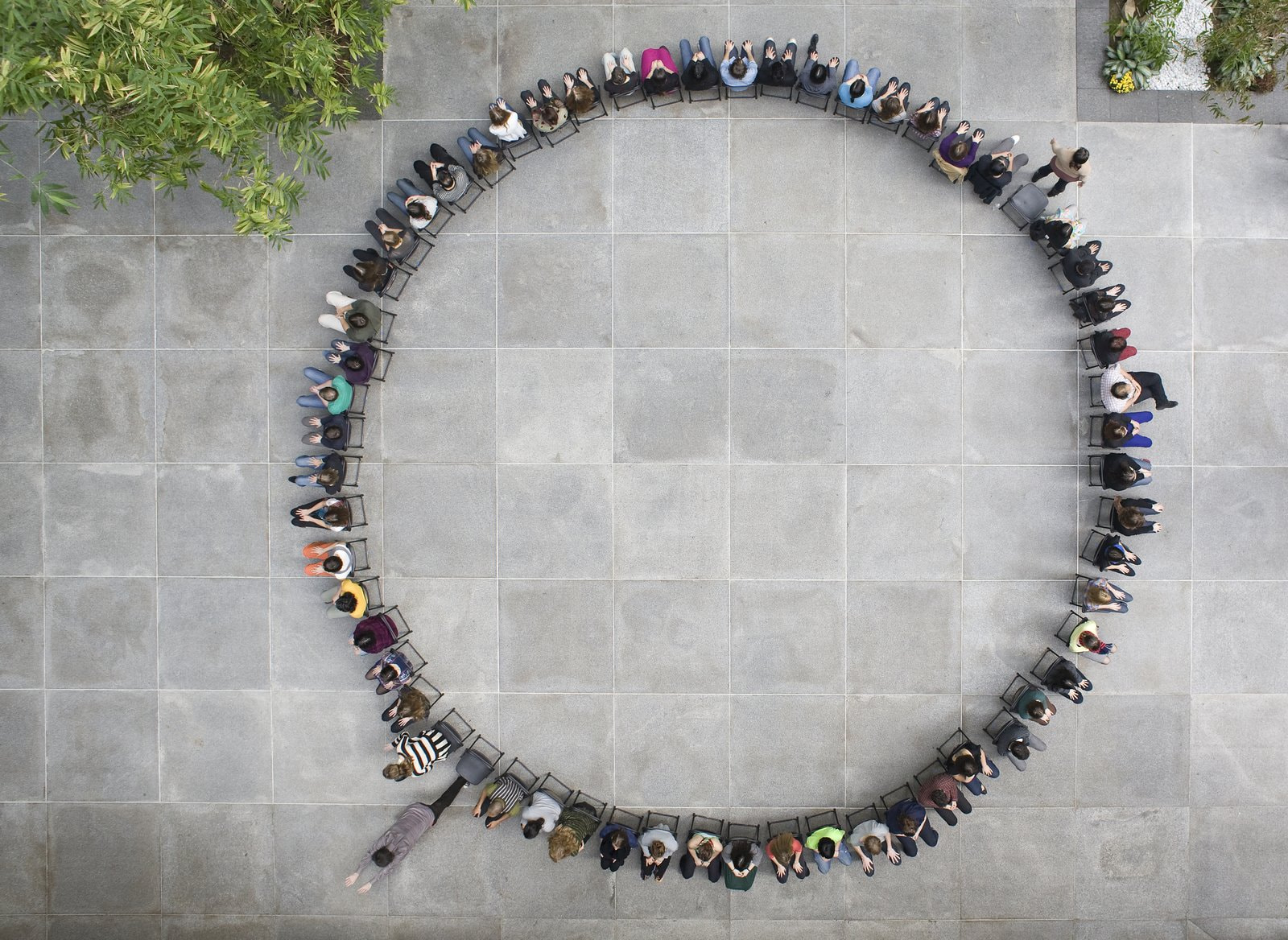Taking queues from Busby Berkleyʼs synchronized swimming spectacles, Davide Balula boils down the decadence to a simplistic geometry and suggests that we acknowledge the passage of time: over the course of the hour, the dancers mimic the rotation of the hands of a clock.
Aligned in a circle and seated facing outwards, each member of the clock perform one move per second, one after the other, creating a single wave of motion.
Collectively, in succession, the dancers merge into a single entity, feeling the wave almost psychically as the movement is transmitted around the circle, passing the energy from one person to the next. But each dancer (second), is autonomous. We really understand the dancers as individuals when for one minute they step out of the circle and gyrate, curl, or in some cases just stand, until the clock comes around again and he or she is replaced by the neighboring dancer.
